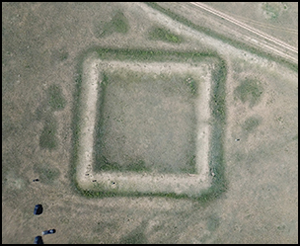Crossref Citations
This article has been cited by the following publications. This list is generated based on data provided by
Crossref.
Shelach-Lavi, Gideon
Honeychurch, William
and
Chunag, Amartuvshin
2020.
Does extra-large equal extra-ordinary? The ‘Wall of Chinggis Khan’ from a multidimensional perspective.
Humanities and Social Sciences Communications,
Vol. 7,
Issue. 1,
Thibodeau, Kenneth
2021.
Discerning Meaning and Producing Information: Semiosis in Knowing the Past.
Information,
Vol. 12,
Issue. 9,
p.
363.
Storozum, Michael
Golan, Dan
Wachtel, Ido
Zhang, Zhidong
Lotze, Johannes S.
and
Shelach-Lavi, Gideon
2021.
Mapping the Medieval Wall System of China and Mongolia: A Multi-Method Approach.
Land,
Vol. 10,
Issue. 10,
p.
997.
Shiraishi, Noriyuki
2023.
The Cambridge History of the Mongol Empire.
p.
1275.
Shen, Shenge
Tan, Lifeng
Wang, Cheng
Zhao, Pengfei
Liu, Huanjie
Zhou, Jiayin
Wang, Yinggang
Yuan, Hong
and
Chen, Peng
2023.
Quantitative study on the three-dimensional defense of Puzhuang Suo-Fort ancient wall and the moat.
PLOS ONE,
Vol. 18,
Issue. 3,
p.
e0282537.
Li, Zhe
Tuo, Xiaolong
and
Zhang, Mengdi
2023.
Types and historical roles of secret gates: a new understanding of the Ming Great Wall based on a digital heritage survey.
Journal of Asian Architecture and Building Engineering,
Vol. 22,
Issue. 2,
p.
842.
Hanks, Bryan K.
Shelach-Lavi, Gideon
Bermann, Marc
Eklund, Emily
Greaves, Aspen
Amartuvshin, Chunag
Tserendash, Narantsetseg
Goldsmith, Yonatan
Burentogtokh, Jargalan
and
Erdenebat, Ulambayar
2024.
Examining Medieval Long-Wall frontier systems (11th – 12th centuries AD) through archaeological geophysics in the Eastern Mongolian Steppe Region.
Journal of Archaeological Science: Reports,
Vol. 60,
Issue. ,
p.
104860.
Chunag, Amartuvshin
Shelach-Lavi, Gideon
Honeychurch, William
Byambatseren, Batdalai
Shamir, Orit
Munkhtur, Uuriintuya
Wolin, Daniela
Wang, Shuzhi
and
Shamir, Nofar
2024.
An elite grave of the pre-Mongol period, from Dornod Province, Mongolia.
Archaeological Research in Asia,
Vol. 39,
Issue. ,
p.
100537.
Fung, Ying Tung
Gantumur, Angaragdulguun
Wachtel, Ido
Chunag, Amartuvshin
Zhang, Zhidong
Fenigstein, Or
Golan, Dan
and
Shelach-Lavi, Gideon
2024.
Unraveling the Mongolian Arc: a Field Survey and Spatial Investigation of a Previously Unexplored Wall System in Eastern Mongolia.
Journal of Field Archaeology,
Vol. 49,
Issue. 4,
p.
225.
